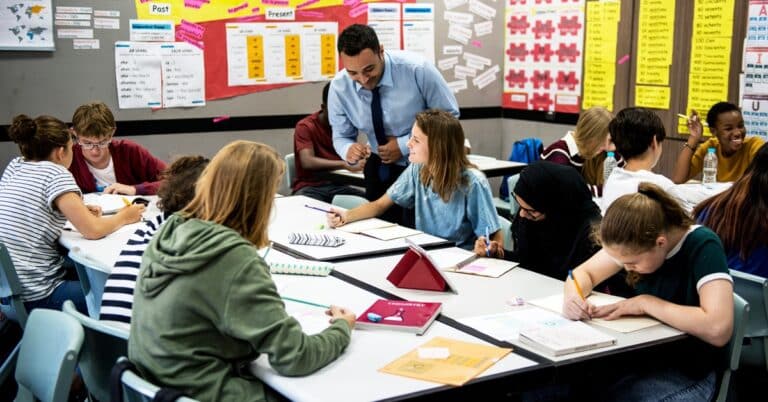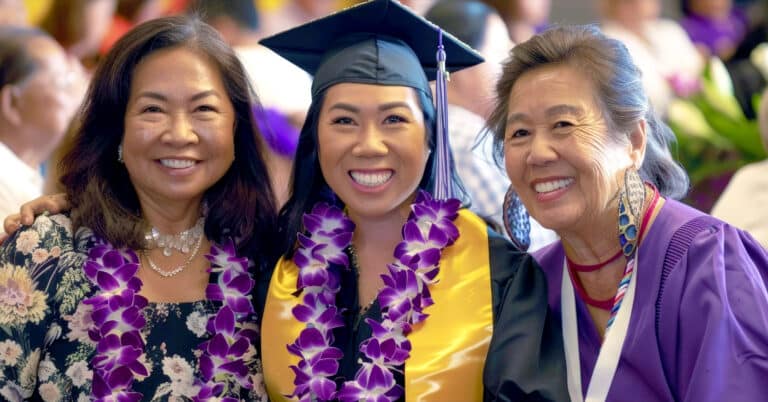By Eric Toshalis, EdD
While teachers learning to implement personalized, competency-based education typically discover highly effective ways to facilitate self-directed learning activities, the disciplinary strategies they use can remain stuck in retributive, punitive, exclusionary and culturally insensitive models.
The mismatch can be jarring when lessons and assessments routinely prioritize student agency but classroom management is still about teacher control. For students, this can be confusing and undermine the potential of competency-based learning.
When students are trusted to learn content at their pace using strategies they choose, but are distrusted to learn how to behave unless it’s directed by the teacher, it messes with their heads. Even the best competency-based learning environments can undermine student agency, motivation and engagement if those environments are still tethered to teacher-driven, compliance-based enforcement of rules.
This mismatch is partly due to the fact that the classroom management field has long dedicated itself to the techniques of keeping order during teacher-driven direct instruction. Consequently, many educators have developed an unhealthy obsession with policing students’ attention. In far too many places – including in some competency-based learning environments – a “well-managed” classroom means the teacher makes the lessons and the rules, delivers instruction to students in rows, scans the room constantly, praises the compliant and locates and reprimands the misbehavers. And if those troublemakers don’t obey, then the teacher sends them out. This is an oversimplification, of course, but even if partly true, it runs against the kinds of self-directed learning opportunities characteristic of competency-based classrooms.
The observations above suggest a reckoning may be needed. The much-needed focus on student-centered instruction and assessment will only ever be a half-remedy if we ignore the concurrent need for student-centered disciplinary strategies. The good news is that when personalized, competency-based learning is paired with research-proven community- and relationship-building strategies, student empowerment and pro-social methods of self-discipline and restoration, powerful synergies emerge.
Nine components of student-centered classroom management
Curious about how seasoned competency-based innovators make sense of this need for aligned behavioral approaches, we interviewed education leaders about the relationship between school discipline, classroom management and personalized, competency-based learning. We then compared what they said with published research. The result is nine essential features of student-centered classroom management, summarized below.
Each of the leaders we interviewed recommended implementing some or all of these features to ensure cohesion rather than tension between competency-based forms of instruction and assessment and the classroom management strategies needed to co-build and co-sustain vibrant learning communities with students. We envision using these nine components as a checklist or discussion starter in your classroom, school or district to see whether the management practices you’re using are consistent with what scholarship and field leaders recommend.
- Student Empowerment: Students are actively involved in decision-making processes, including co-creating classroom rules/norm and routines, evaluating learning conditions and teacher facilitations, contributing ideas for improvement, monitoring the classroom culture to ensure it works for everyone, holding each other accountable to agreed-upon standards of behavior and productive routines, co-leading class meetings or circles when they are needed and taking ownership of their collective and individual learning experience.
- Collaborative Learning Environment: Students have multiple opportunities to engage in teamwork, peer learning and group activities that facilitate mutual respect, cultural affirmation, status mitigation, problem-solving and high levels of achievement. Students are engaged in responding to classroom issues and participate productively if not proactively in solving problems.
- Non-Punitive, Restorative, Humanizing Practices: Teachers respond to behaviors first to understand the roots of the students’ decision-making, whether harm has occurred and what in the learning environment may need to shift to better promote pro-social behaviors by that student. If repair is needed, the teacher helps to facilitate that. If academic work is unlikely to be successful in that moment, students are offered face-saving options. Reprimands, threats, punishments, detentions, suspensions, external rewards and other manipulations are not used, or used only in rare cases.
- Relationship-Focused Approach: The teacher prioritizes connection, curiosity, engagement, mutuality, cultural responsiveness, authenticity, compassion, humor, affirmation and negotiation in relating to students. Multiple informal and formal opportunities are provided on a weekly basis for teachers and students to connect meaningfully about the content being explored and its relevance and application in students’ lives, community and world. Teachers and students praise one another regularly and express interest in getting to know one another better.
- Flexible Classroom Setup: The teacher works with students to establish and frequently adjust a physical classroom layout to ensure it supports various learning activities, the bulk of which are student-centered and allow for movement, collaboration, project/problem-based work and independent inquiry and practice. Students know how to “use the room” to advance their academic and social development, and they do so productively and creatively.
- Clear Expectations, Modeling and Consistency: Teachers use co-constructed class agreements/norms to remind students of expectations for behavior and how best to take care of one another, so the classroom becomes a place that is safe for exploration, mistakes and epiphany. Teachers consistently hold students accountable to norms and model expected behaviors—including the need for repair after a transgression—sometimes explicitly teaching what members of the learning community should be doing. Teachers dedicate necessary class time to help students modify such norms when circumstances make revision necessary.
- De-Escalation, Conflict Resolution and Problem-Solving: When students are activated and struggling to self-regulate, the teacher does whatever is possible to de-escalate, remain peaceful and get the student’s needs met. When disagreements or arguments ensue between the teacher and student or between students, the teacher takes a conflict-resolution approach ensuring that space is held to communicate and understand impact before intentions and resolutions are sought. And when harm has occurred, the teacher works with students to repair relationships using field-proven restorative practices.
- Recognition of Status Differences and Forms of Systemic Oppression: Teachers encourage students to raise and discuss issues and events that influence how the class interacts with one another. Such issues and events may be internal to the classroom or school, or may reflect larger trends in the community, region, nation or world. Teachers monitor the classroom for how status differences may lead to microaggressions and/or abuse and addresses them directly if/when they occur. Students are asked routinely to name how race, class, gender, sexual orientation, linguistic heritage, indigeneity, immigration status and (dis)ability may shape interactions and expectations in the classroom and to actively participate in analysis and resolution if needed.
- Regular Feedback Loops: Teachers actively seek and integrate feedback from students regarding the quality of the learning environment, the methods used to facilitate community and accountability and adherence to co-created behavioral norms. Class meetings, circles, exit tickets, one-on-ones and student-led family conferences are used regularly to gather and apply student guidance about how best to co-build and co-maintain a classroom culture conducive to everyone’s growth and well-being.
Special thanks for the expertise of the following contributors:
- Hector Estrada, Senior Program Manager, Next Education Workforce at Arizona State University
- Theresa Ewald, Associate Director, Institute for Personalized Learning
- Robin Kanaan, Director of Teaching and Learning, KnowledgeWorks
- Joy Nolan, Founder and Director, New Learning Collaborative LLC
- Karen Perry, Clinical Faculty of Ed Leadership and Director of Next Gen Scholars, University of Kentucky
- Mimi Renteria, Principal, San Cayetano Elementary School, Santa Cruz Valley Unified School District, Arizona
- Carla Shalaby, Coordinator of Social Justice Initiatives and Community Internships, Marsal Family School of Education, University of Michigan
- Cory Steiner, Superintendent, Northern Cass School District, North Dakota
- Jonathan Vander Els, Director of Collaborative Learning, New Hampshire Learning Initiative




